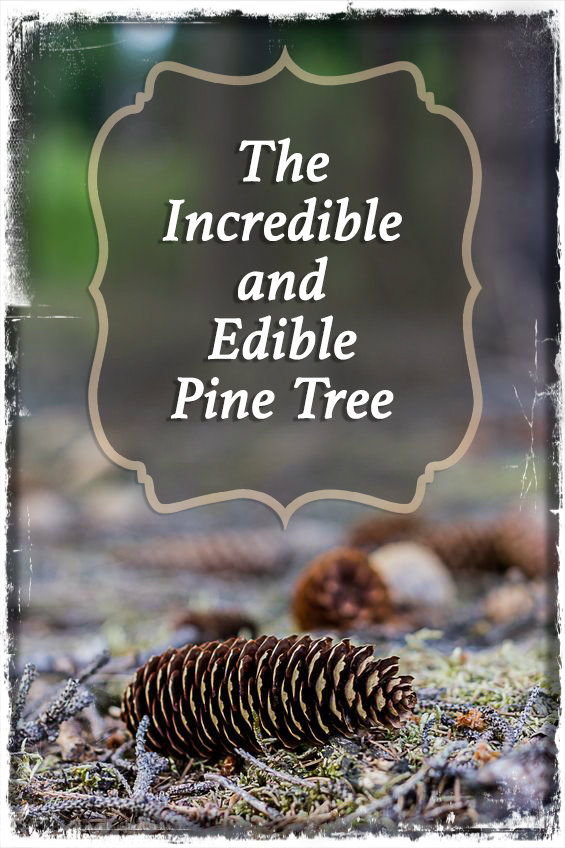
Plant a Pine Tree Because Someday It May Save Your Life
The Royal Botanic Gardens, Kew and the Missouri Botanical Garden accept 175 names of pines (conifers) as current.
In most cases, they tend to be hardy trees in their native environment and they can be found practically anywhere. A pine tree may very well be your best friend if you find yourself lost or stranded in a wilderness environment.
Emergency Food/Nutrition/Medical
- Pine needles can be steeped to make tea or to give flavor to bland tasting water. The brew will be loaded with vitamin C. Steep the needles in hot water from five to 10 minutes, but keep in mind the Vitamin nutrients will decrease the longer the needles steep. There are three pines you must avoid, The Yew (Taxus), Norfolk Island Pine (Araucana heterophylla) and the Ponderosa Pine (Pinus ponderosa), yellow pine. So make sure you learn how to identify them.
- All pine nuts (actually, they are seeds) are edible, and they can be eaten raw or roasted but once removed from the husk they deteriorate quickly. Roasting will prolong their life so roast up a few for the trail.
- Inner pine bark is edible, and it can be eaten raw, boiled, fried or roasted over a flame. It is important that you do not “ring” any tree when harvesting the inner bark, because this can kill the tree. Look for fallen limbs, or work on just one side of the tree when cutting away the bark.
- Pine resin or as some call it pitch can be chewed like gum and Native Americans routinely chewed and consumed the resin for its anti-bacterial properties and for joint pain. The resin can be steeped in hot water to make a tea that is said to help with arthritis and stomach problems.
- Male pinecones found near the tips of the branches can be eaten boiled or baked. The male cones will produce pollen in the spring that can be collected and used as a thickener for broths, stews and added to flour or even used as flour. The male pinecone is smaller than female cones.
- Pine resin can be applied directly to cuts, abrasions and even to deep slashes to help kill bacteria, to prevent bacteria growth and to keep it from getting into the wound. Use the resin to slow or stop the flow of blood from wounds. Leave on the wound and reapply as needed.
Fire and Light
Pine resin is highly flammable (sap is not the same as resin) and it can be used to start fires in damp or wet conditions. Collect the resin from breaks in the bark or from broken branches. In most cases, it is not necessary to “wound” the tree, but if you cannot find a break or damage to a tree or downed limbs that occurred naturally, you can slash a small portion of a mature tree to harvest the resin, but again work in small areas to protect the tree. Keep in mind the resin protects breaks and cuts in the tree from insects and diseases.
Resin can be used as candle wax would be used to create temporary lighting. Fill any depression with the resin as long as the container/receptacle can withstand the heat, and add a wick. Organic materials make the best wicks so strips of cotton material or cordage made from jute, cotton or other organic fibers are ideal.
Shelter
Fresh cut pine boughs laid over your shelter roof with the needles pointing to the ground will help shed water and snow. Pine needles also make good bedding and they will help to insulate the body from the cold ground.
In some cases, you can seek shelter under large pine trees if the branches are low to the ground. If snow is on the branches, shake it loose before sheltering underneath. Remove the snow from under the tree and create a windbreak with the snow by piling it up along the front and sides of the shelter. Branches heavy with pine needles can disperse/hide smoke from a fire during daylight hours.
Maintenance
Pine resin can be used to waterproof seams on nylon or canvas tenting, or used to waterproof stitching on boats, shoes and backpacks. The resin can also be made into glue by melting in a suitable container and mixing in crushed charcoal from your campfire.
Typically, you would use one part charcoal to three parts resin. The glue will harden once cooled and it can be stored in the container and melted over a fire so it can be applied, or you can continually dip a stick into the melted glue to form a ball at the end for easy transporting.